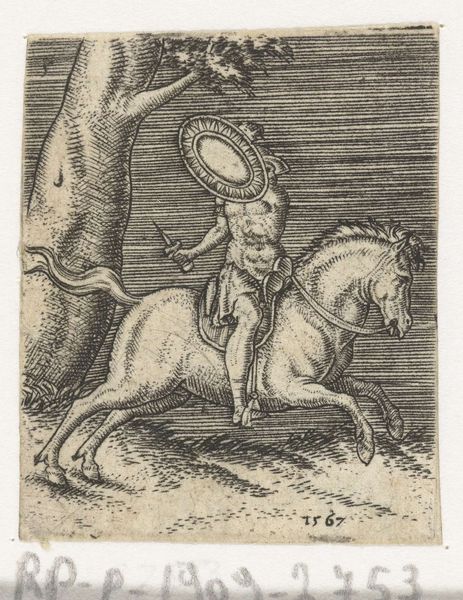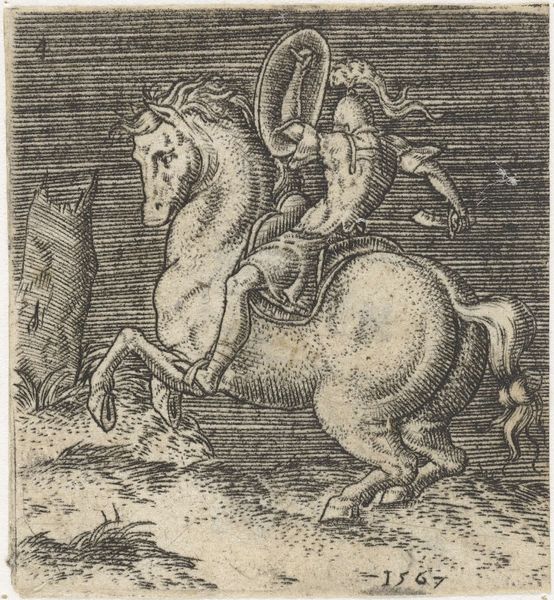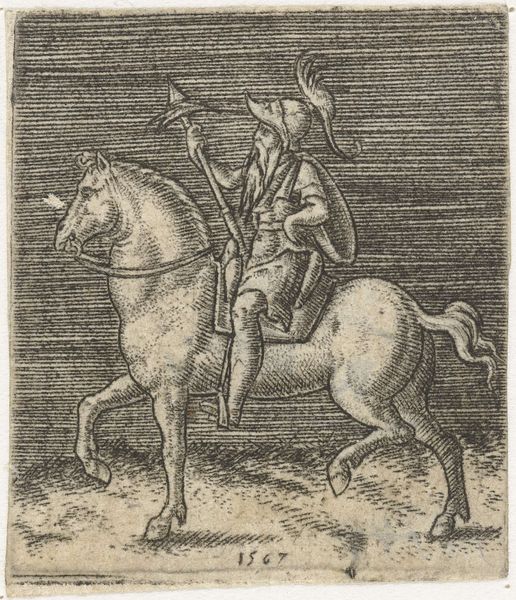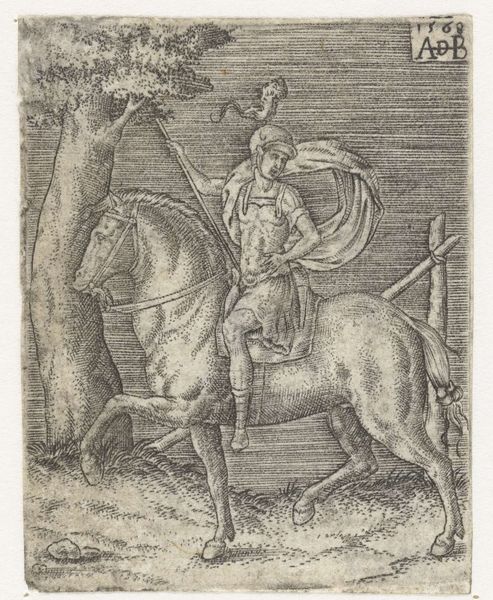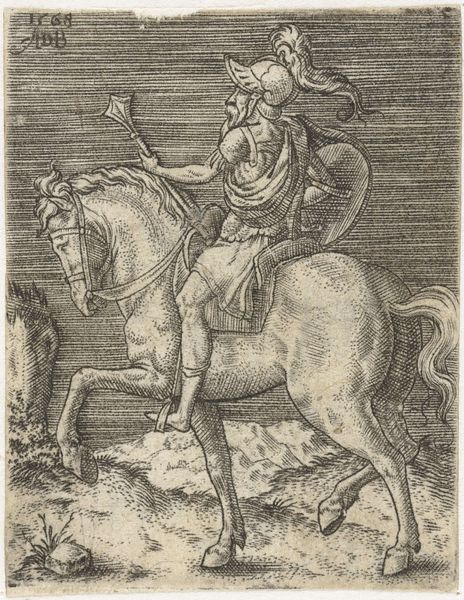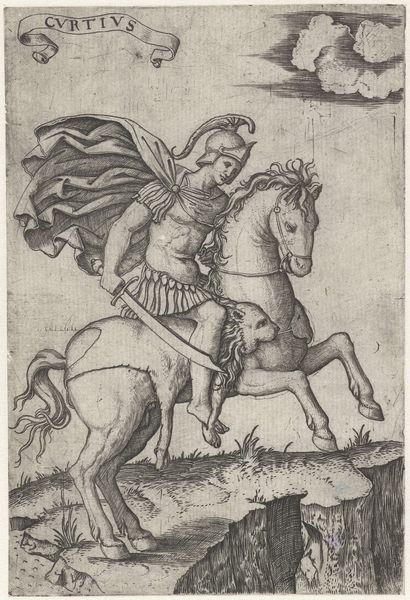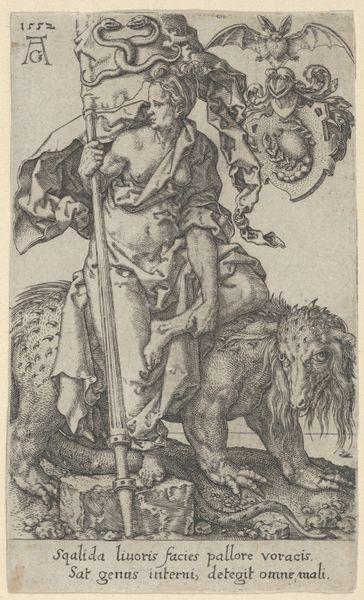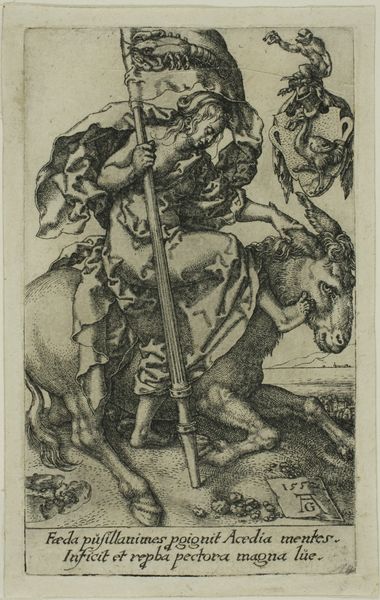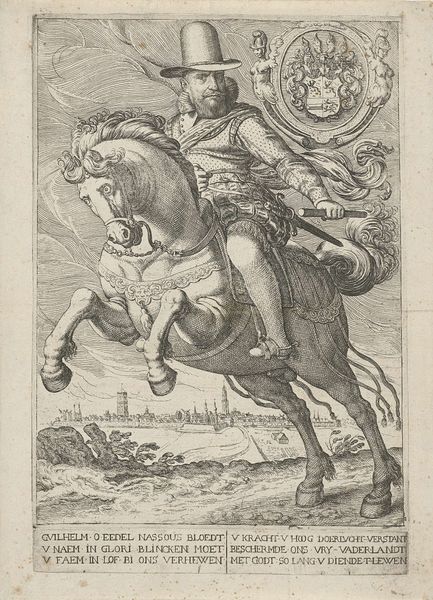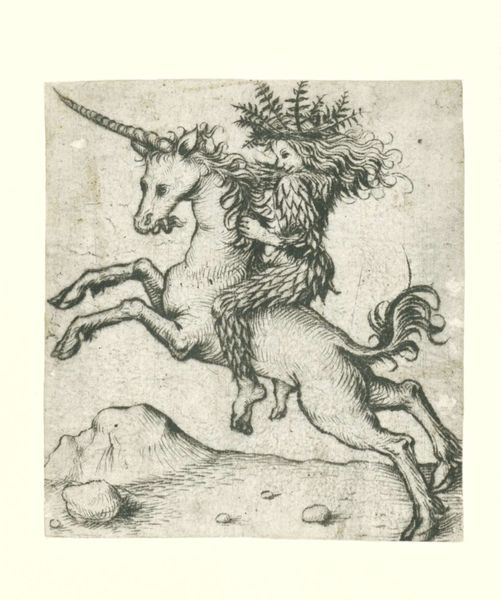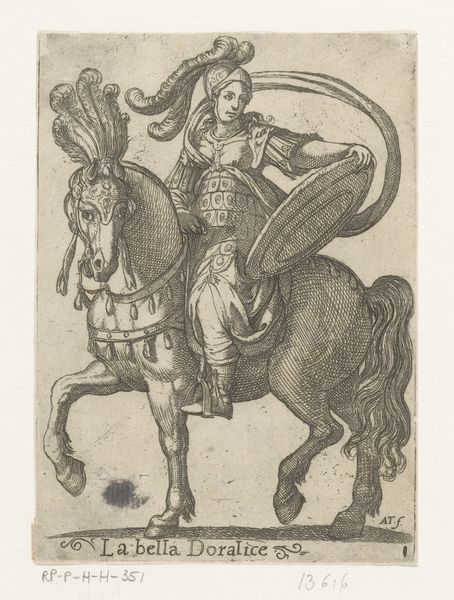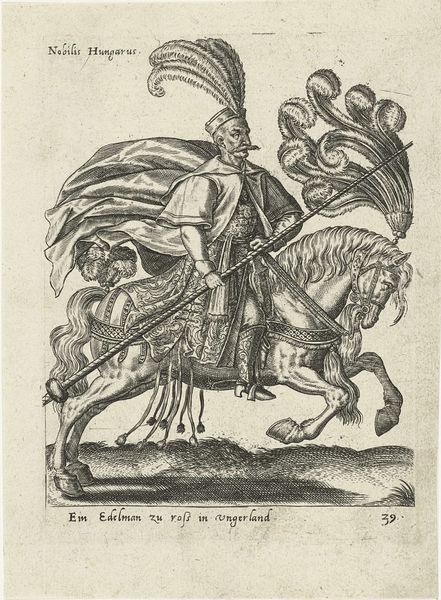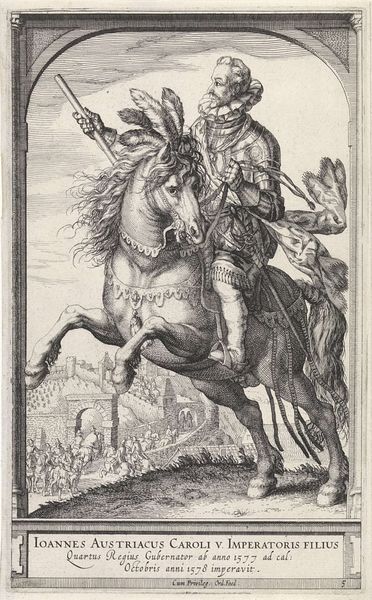
print, engraving
#
portrait
# print
#
mannerism
#
figuration
#
line
#
history-painting
#
engraving
Dimensions: width 29 mm, height 33 mm
Copyright: Rijks Museum: Open Domain
This engraving, made by Abraham de Bruyn around 1567, depicts a Roman horseman. It's a humble thing, really – just a few square inches of paper, with an image incised into a metal plate and then printed. What makes it interesting is the process, which is fundamentally reproductive. Each impression pulled from the plate would have been nearly identical. Engraving like this was a mainstay of the print industry in the early modern period. It allowed images and information to circulate widely. Consider the labor involved. De Bruyn would have been a skilled artisan, trained in the use of specialized tools to create this image. The success of his endeavor depended on the infrastructures of production and distribution. Paper, ink, printing presses, and a network of merchants were all essential to get his image into the world. So, while this may seem a simple image, it's anything but. It's a testament to the power of reproducible media, and the complex social and economic systems that made it possible.
Comments
No comments
Be the first to comment and join the conversation on the ultimate creative platform.
